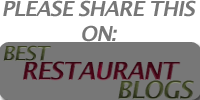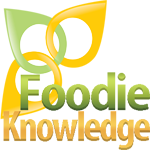The planet Earth produces more food than ever before. Tremendous advances in food sciences have lead a higher percentage of our planets population to be fed than in any time in the modern era. No person is more responsible for this than one of my personal heroes, Norman Borlaug. It is estimated that the advancements he created saved over a BILLION lives. Yet to this day he and his techniques are widely criticized.
I mention Dr Borlaug for two reasons. First, I feel he is someone everyone should know about. Second, in a time of unprecedented food abundance we are supposed to feel guilty about eating more of it than ever before. All food does come with an environmental cost. Even people who may not be willing to avoid meat entirely are more concerned with the environmental impact of what they do eat. I have never considered myself a food alarmist, but I do have three items I avoid: bar olives, gulf oysters, and farm raised salmon.
In an attempt at full disclosure, I feel it is only fair to mention that I have a distinct bias on this issue. I am not a scientist, but I read what they write. The preponderance of the material I have read raises very serious questions about the environmental impacts of farm-raised salmon. The literature that contradicts these impacts is generally produced by trade groups that represent salmon farmers. With this in mind I will present both sides with as many citations as possible and let you decide for yourself.
Wild Salmon
There are two primary arguments against wild salmon. The first is that wild salmon is incapable of meeting our demand for salmon. If we were to eat only wild salmon, the demand would not keep up with supply. This would lead to massive price spikes and over-fishing. This has been demonstrated in the past with Atlantic salmon. The second issue is by-catch. By-catch is a euphemistic phrase used by fisherman to describe unintended species of fish caught by accident in nets. Most wild salmon is caught through the use of gillnets, purse seines, and trolling. By-catch is inevitable with these methods.
The one website that I have found that is anti-wild caught salmon is www.salmonfacts.org/. It is an informational website sponsored by a group called Salmon of the Americas which some additional research reveals is a trade group for farm-raised salmon producers.
Farm-Raised Salmon
The arguments against farm-raised salmon are plentiful. Here are some of the major criticisms. This video outlines some of the major issues.
Sea Lice: Sea lice are small parasites that live on the outside of fish in salt water. They cannot survive in fresh water and die naturally when the salmon return to spawn. They rarely exist in sufficient quantities to pose a threat to wild salmon naturally. Salmon pens at sea raise salmon in such density that lice reproduce far more rapidly than they would in the wild. This poses a threat to wild salmon that migrate near these pens and encounter a far greater number of these lice than exists naturally. Additionally since farm raised salmon do not return to fresh water to spawn, the nice do not die naturally as they would in the wild.
Antibiotics: Because of the density in the pens of farm-raised salmon, they are often treated with antibiotics. This poses risks to humans who consume then in high quantities of developing a resistance to disease fighting antibiotics they may later take.
Fish Stocks: It takes between two and five pounds of fish to add one pound to the weight of a farm-raised salmon. This means that significant amounts of smaller fish have to be raised to provide an adequate diet to the salmon. This compound the environmental impacts by producing more waste in the farming of these fish. When these feed fish are not farm raised, they are taken away from the native fish that rely on them for their diet.
Ocean Floor: The feed that is not consumed by the salmon in the pens and the fecal waste produced by the salmon falls to the ground under these pens. The bacterium that grows as a result takes away oxygen from native shellfish that are a food source for the indigenous fish of the area.
Nutrition: Farm-raised salmon are lower in protein, lower in healthy Omega-3 fatty acids, higher in overall fat, and higher in unhealthy Omega-6 fatty acids.
Toxins: This is where thing really start to get scary. Farm-raised salmon can be as much as eight times higher in PCBs than wild caught. PCB is a known carcinogen that has been banned in commercial products since the 1970s. There are a variety of other known carcinogens found in significantly higher quantities in farm-raised salmon than in wild caught.
Impact on wild salmon: In areas where farm raised salmon are kept in pens, it has been shown to cause a reduction of over 50% in the native wild salmon stocks.
The information on the environmental impacts of farm-raised salmon comes from a variety of sources. Some of the best are Seafood Watch, Farmed and Dangerous, Certified Organic, Food Democracy, Pays to Live Green, World Wildlife Fund, World’s Healthiest Foods, Environmental Defense Fund, National Geographic, and CNN.
This wraps up my three part series on salmon. If you missed the previous parts, you can visit them by clicking here. Next Friday, we will move from salmon to crabs. I will break down different species and provide a few facts that will make watching Deadliest Catch far more interesting.



Pingback: The Index « Tips on improving your Tips
Pingback: Dr Strange Salmon « Tips on improving your Tips